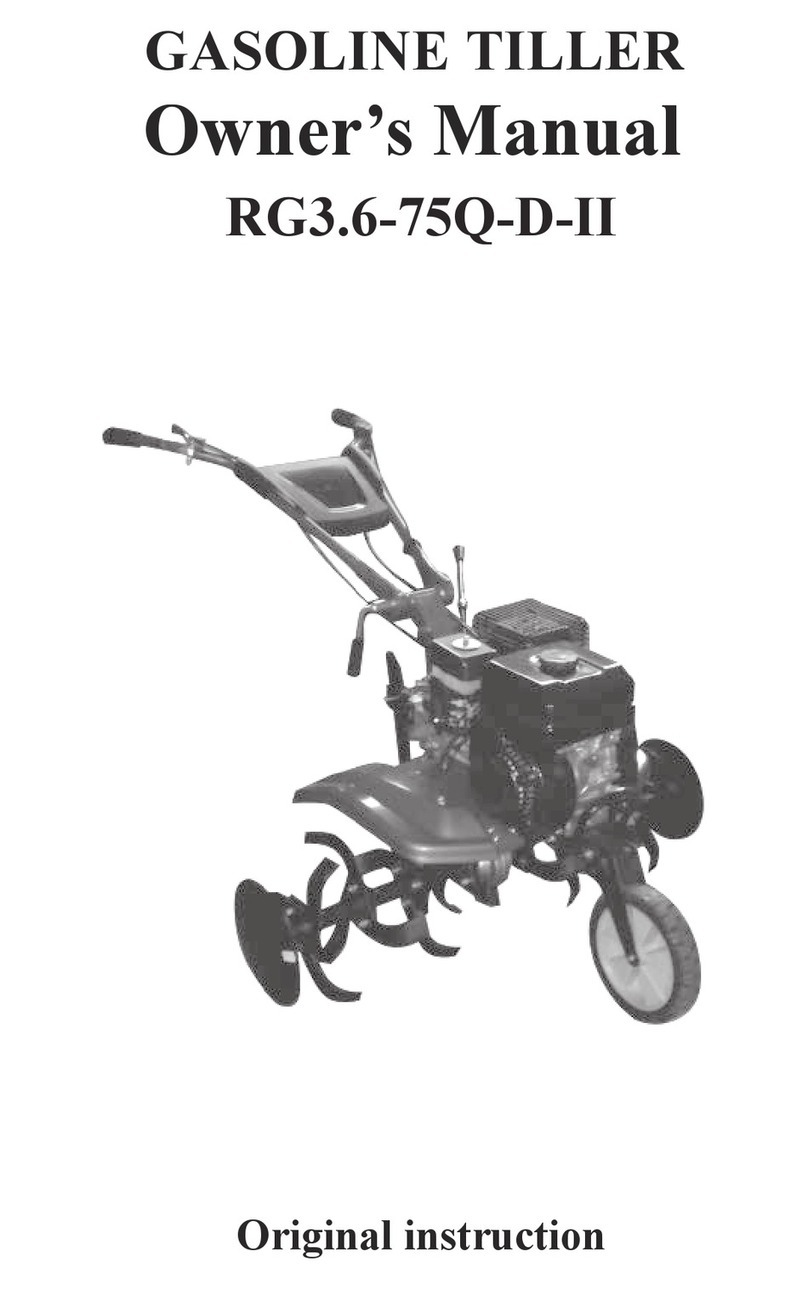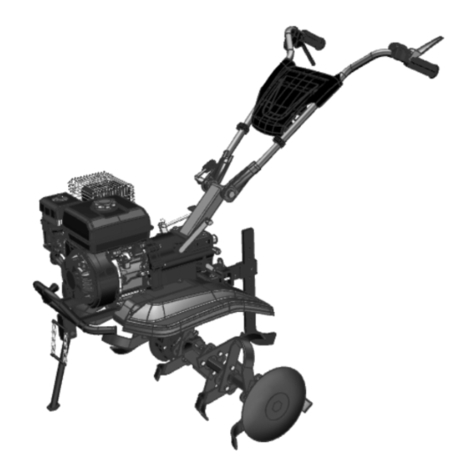It will lead your family to a better life more quickly.
This machine is small, light, multi-functional, and with a high efficiency for
cultivating. It can climb hills, run in water, walk over the field ridges and ditches,
move freely and change the directions easily, and it is especially applicable to
various working in hilly area, dry land, paddy field, orchard, vegetable garden
and greenhouse, etc. Cultivating, ditching & ridging, and transport are the
machine’s basic functions. Moreover, after being equipped with relative devices
and tools, it may be used to pump water, spray water and pesticide, reap the
crops, generate electricity, fertilizer, implant seeds, threshing, cut tendrils, grind
something, etc. The machine has a simple structure, can be easily repaired and
its fuel consumption is small, it is your ideal micro agricultural machine.
The machine is a good helper for your family to be wealthy Before you use the
machine, please read the instruction manual carefully. it can guide you to solve
the problems when you are installing, manipulating and repairing the machine.
With the continuous innovation and improvement of the products, the contents
in the (of )instruction manual may differ slightly from the actual situations, your
understanding and pardon is highly appreciated. If you find some problems or
have some good suggestions, please do not hesitate to contact us.
Let’s seek a bright future hand in hand!
Thanks!





























